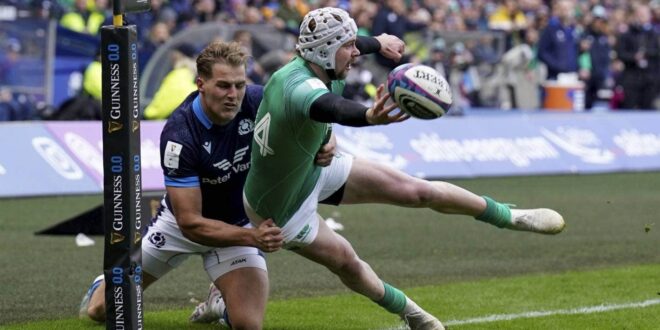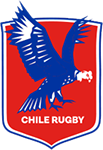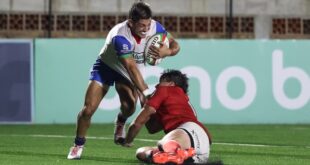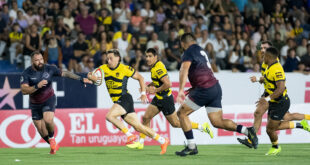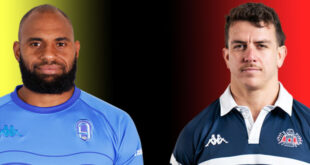Rugby World Cup 2023 will be contested by twenty teams. Rosters contain a variety of nationalities. Some rosters are entirely homegrown while others have a range of Foreign-Born / Produced Players.
Unlike at RWCs 2003-2019, World Rugby eligibility law changes enable eligible players to represent a second country. Players can do so following a three-year stand-down period from their last binding representative appearance for their first country. World Rugby’s announcement argued that the change will serve as “a real boost to the competitiveness of emerging nations.” World Rugby CEO Alan Gilpin argued that the law changes are not a Pacific Islands measure.
One example is Australia’s Rugby World Cup 2019 flanker, Jack Dempsey who now plays for Scotland. He can play at two World Cups for different countries and, in fact, he debuted for Scotland against Australia in November 2022. He qualified for Scotland via (a) a grandparent and (b) completing a three-year stand-down period from his last binding representative appearance.
Eligibility was previously obtained by meeting Regulation 8 as outlined by World Rugby. Players were required to meet at least one of three criteria: (a) be born in the country; (b) have one parent or grandparent from the country; or (c) complete 3 years consecutive residency immediately before representative duty.
In 2023 the residency requirement is five years or ten years cumulative. Residency was supposed to be extended from three to five years at the end of 2020; however, the May 2017 decision to change Regulation 8 began one year later than originally intended. Residency-qualified players were previously required to complete a 36-month residency qualification period. Since January 01, 2022 this has been 60 months.
To review the Foreign-Born players at RWC 2015 click here.
To review the Foreign-Born players at RWC 2019 click here.
Disqualifications for Eligibility Breaches
In between RWCs 2019 and 2023 there was a player eligibility scandal. Spain qualified for RWC 2023 as Europe 2; however, Spain will not compete with Romania replacing them as Europe 2. World Rugby disqualified Spain for breaching player eligibility laws by selecting South African prop Gavin van den Berg as a replacement in qualifiers against the Netherlands. Spain won the matches 43-0 and 52-7.
Controversy also involved Spain and Europe in 2018. Romania qualified for RWC 2019 only to be disqualified and replaced by Russia. Sione Faka’osilea was confirmed as having already been captured by Tonga. In addition, Spain was disqualified from RWC qualifiers with Mathieu Bélie and Bastien Fuster deemed captured by France based on playing for France vs Wales at u20 level. The policy which saw Bélie and Fuster captured no longer exists as countries can no longer nominate their u20 side as their ‘next senior XV’.
Romania and Spain paid heavily; yet, World Rugby did not tighten eligibility laws. To the contrary, World Rugby allows countries to cap players previously capped by another.
Case of Missed or Non-Transparent Eligibility?
An additional controversy since RWC 2019 surrounds Italy. It was brought to the attention that Italy fielded players at RWCs 2003-2015 who were not eligible.
- Martín Castrogiovanni’s connections to Italy are through his father’s grantparents. He played for Italy at RWCs 2003, 2007, 2011 and 2015.
- Luciano Orquera Italian connections were a great-grandparent. He played for Italy at RWC 2011.
- Carlo del Fava says his Italian family is through his great-grandfather. He played for Italy at RWCs 2007 and 2011.
- Gonzalo García did not have Italian parent or grandparents. La Gazzetta cello Sport noted that García’s maternal great-grandfather was from Italy and Benetton reported García’s Italian ties are to Parma through a great-grandparent.
- Santiago Dellapè’s Italian connections were not parent nor grandparent. La Repubblica reported that Santiago Dellapè was Italian eligible because of his great-grandfather from Cosenza. In the month of his debut for Italy, Dellapè said that he has great-grandparents from Cosenza.
- Ramiro Pez played in RWC 2007 qualifiers against Portugal and Russia in 2006 and two matches at Rugby World Cup 2007. He did not have Italian parents or grandparents. His great-grandparents were from Rome and Udine. This qualified him for an Italian passport but he was capped without meeting eligibility requirements.
- Gonzalo Canale lived in both Argentina and Italy as a child. He moved to Italy for a second time before debuting for Italy at the age of 19. Despite having spent more than three years of his youth in the country, the timing was not immediately before his debut. Canale’s parents and grandparents were not from Italy. He has held an Italian passport since a young age. The former center’s connection to Italy was his great-grandparents who were from Piedmont.
Granny Gate World Cup 1999
An eligibility scandal involved Wales and Scotland. In March 2020 it was confirmed that Wales’ Shane Howarth and Brett Sinkinson and Scotland’s Dave Hilton played in Rugby World Cup 1999 despite not being eligible. They were mistakenly allowed to play via a grandparent.
- Wales fielded Shane Howarth and Brett Sinkinson against Argentina, Australia, Japan, and Samoa in Rugby World Cup 1999 matches.
- Dave Hilton played against South Africa, Spain and Uruguay in RWC 1999. Hilton also played at RWC 1995.
The International Rugby Board (IRB – now World Rugby) terminated Howarth’s Wales career. Sinkinson and Hilton returned via three-years residency to play again in 2002. Neither Wales nor Scotland were disqualified from RWC 2003 nor were they required to play in qualifiers. Both hosted matches at RWC 2007.
The RWC 2003 qualifiers involved eligibility breaches. The IRB disqualified Russia. This is consistent with Romania missing RWC 2019 and Spain missing RWC 2023. It also suggests that Italy should have been disqualified from RWC 2007 with Portugal qualifying instead and Russia facing Uruguay in repechage.
This article documents Foreign-Born players at Rugby World Cup 2023. It identifies who the players are, where they are from, how they are eligible, if the player has represented another country and which country produced and trained the player to make him the international player that he is today.
Homegrown players are identified by the color blue in the produced category. Players shown in blue are products of the country they represent at Rugby World Cup 2023. That is to say, the team they represent is primarily responsible for the player’s development. Red indicates that the player is primarily or entirely the product of the rugby systems of a different country.
The countries are organized in descending order from the highest to the lowest number of foreign-born players per 33-man roster. The final section shows the overall numbers for the tournament and the past two World Cups as well as the quantity and percentage of foreign-born and homegrown players per region and per country of birth.
This is an original work researched and written by Paul Tait of Americas Rugby News.
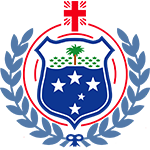
SAMOA
The roster can be summarized in three categories: (a) Samoa born and homegrown, (b) Samoa born but foreign produced and (c) not born in Samoa nor homegrown.
Five of the thirty-three are from homegrown players. They are forwards Miracle Fai’ilagi, Fritz Lee, Theo McFarland and backs Tumua Manu, and Melani Matavao. Ed Fidow moved from Samoa to New Zealand aged 15 but only began playing rugby at 18.
Alamanda Motuga and brothers Jordan Lay and James Lay were born in Samoa. They are New Zealand rugby products. Jordan and James Lay moved to New Zealand aged 2 and 3 respectively.
The eligibility changes have enabled Samoa to obtain players capped by others. However, Fritz Lee is the only example of a homegrown Samoa player that was lost to a rival. Lee played 7’s for New Zealand in 2010. He played rugby in New Zealand from 2007–2013.
No other Samoa player that has made the allegiance change is from Samoa or a product of Samoa. Moreover, 28 of the 33 Samoa players went through the Australia or New Zealand systems. Lee has ‘reclaimed’ Samoa eligibility through his personal birth. The others have done so via a parents place of birth.
Charlie Faumuina earned 50 caps for his native New Zealand. The prop from Auckland played in the Rugby World Cup 2015 final. Steven Luatua, and Lima Sopoaga are also former All Blacks.
Christian Leali’ifano played for Australia vs Uruguay at RWC 2019. He can now be the first player to face all of Uruguay, Argentina and Chile at Rugby World Cups. He will do so, however, for different countries. Scrum-half Melani Matavao, is the one local on-island Samoa player on the roster.
All Black prop Jeffery Toomaga-Allen and USA Eagles prop Titi Lamositele were omitted from the roster. Toomaga-Allen debuted for Samoa against Italy in November 2022 while Lamositele debuted for Samoa against Tonga in August 2023. Lamostiele turned-down test duty for the USA during the RWC 2019-2023 cycle. This included World Cup qualifiers. He was born and raised in Washington state and is a USA rugby product.
Lamositele was a 73rd minute replacement against Tonga. He did not play in Samoa’s subsequent warm-up matches against the Barbarians or Ireland. His seven minutes for Samoa vs Tonga mean he can never again play for his native USA.
SAMOA
FOREIGN-BORN PLAYERS: 24/33 (72.7%)
HOMEGROWN PLAYERS: 5/33 (15.1%)
| PLAYER | BORN | PRODUCED | POS | ELIGIBILITY | OTHER REP. |
| Seilala Lam | New Zealand | Australia | HK | Parent | Australia u20 |
| Sama Malolo | Australia | Australia | HK | Parent | Australia u20 |
| Luteru Tolai | New Zealand | New Zealand | HK | Parent | – |
| Michael Ala’alatoa | Australia | Australia | TH | Parent | – |
| Paul Alo-Emile | New Zealand | Australia | TH | Parent | Australia u20 |
| Charlie Faumuina | New Zealand | New Zealand | TH | Parent | New Zealand; New Zealand Colts |
| Brian Alainu’uese | New Zealand | New Zealand | LO | Parent | – |
| Taleni Seu | New Zealand | New Zealand | LO | Parent | – |
| So’otala Fa’aso’o | New Zealand | New Zealand | FL | Parent | – |
| Steven Luatua | New Zealand | New Zealand | FL | Parent | New Zealand; New Zealand u20 |
| Samuel Slade | New Zealand | New Zealand | FL | Parent | New Zealand u20 |
| Sa Jordan Taufua | New Zealand | New Zealand | FL | Parent | New Zealand u20 |
| Chris Vui | New Zealand | New Zealand | FL/LO | Parent | New Zealand u20 |
| Ereatara Enari | New Zealand | New Zealand | SH | Parent | New Zealand u20 |
| Jonathan Taumateine | New Zealand | New Zealand | SH | Parent | New Zealand u20 |
| Christian Leali’ifano | New Zealand | Australia | FH | Parent | Australia; Australia School Boys; Australia u19; Australia u21 |
| D’angelo Leuila | New Zealand | New Zealand | FH | Grandparent | – |
| Duncan Paia’aua | New Zealand | Australia | FH | Parent | Australia; Australia u20 |
| Lima Sopoaga | New Zealand | New Zealand | FH | Parent | New Zealand; New Zealand u20 |
| Neria Fomai | New Zealand | New Zealand | CE | Parent | – |
| UJ Seuteni | Australia | Australia | CE | Parent | Australia u20 |
| Nigel Ah Wong | New Zealand | New Zealand | WI | Parent | Australia Academy |
| Ben Lam | New Zealand | New Zealand | WI | Grandparent | New Zealand 7’s |
| Danny Toala | New Zealand | New Zealand | FB | Parent | New Zealand Schools; New Zealand u20 |
HISTORICAL NUMBERS
2019 – 18
2015 – 13
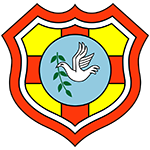
TONGA
Tonga’s roster contains players of three categories: (a) 10 players born in Tonga who are homegrown, (b) 3 players born Tonga born but foreign produced and (c) 20 players not born in Tonga nor homegrown.
The roster includes former Wallaby Adam Coleman, former All Blacks George Moala, Charles Piutau and Augustine Pulu and New Zealand 7’s player Pita Ahki. These players are not returning to Tonga because of eligibility law changes. In addition, Samiuela Moli’s brother is All Black Atu Moli. William Havili’s brother is All Black David Havili.
The Tongan-born players are a mixture of homegrown and not. Three who are not homegrown are Sione Havili, Semisi Paea, and Sonatane Takulua. They moved to New Zealand aged 14, aged 6 and aged 11.
Solomone Funaki, Solomone Kata, Paula Latu, and Sione Vailanu were born and raised in Tonga, though Kata completed his schooling in New Zealand aged 17. While this makes Kata homegrown, in some cases it can be borderline.
Siegfried Fisi’ihoi, Siua Maile, Tanginoa Halaifonua, Malakai Fekitoa and Vaea Fifita also all moved to New Zealand on scholarships to finish high school. Fisi’ihoi returned to New Zealand after being deported in 2010. Fekitoa and Fifita went on to play for New Zealand. Fekitoa and Maile moved aged 16 and Fifita aged 17. He joins his brother Leva Fifita on Tonga’s roster.
Injuries forced changes to Tonga’s roster during the World Cup. Sione Anga’aelangi, Siate Tokolahi, Patrick Pellegrini and Penitoa Finau replaced Siua Maile, Feao Fotuaika, Otumaka Mausia and Solomone Funaki. Siate Tokolahi was born in Tonga and moved to New Zealand on a High School rugby scholarship. Pellegrini is from Australia and FInau is from New Zealand. Tonga’s data has been updated to include the alterations.
TONGA
FOREIGN-BORN PLAYERS: 23/37 (62.1%)
HOMEGROWN PLAYERS: 11/37 (29.7%)
| PLAYER | BORN | PRODUCED | POS | ELIGIBILITY | OTHER REP. |
| Feao Fokuaika | New Zealand | Australia | LH | Parent | – |
| Sione Anga’aelangi | Australia | Australia | HK | Parent | – |
| Paula Ngauamo | New Zealand | New Zealand | HK | Parent | New Zealand u20 |
| Samiuela Moli | New Zealand | New Zealand | HK | Parent | – |
| Ben Tameifuna | New Zealand | New Zealand | TH | Parent | New Zealand u20 |
| Tau Koloamatangi | New Zealand | New Zealand | TH | Parent | New Zealand u20; Hong Kong |
| Joe Apikotoa | New Zealand | New Zealand | TH | Parent | New Zealand Residentes (RL) |
| Adam Coleman | Australia | Australia | LO | Parent | Australia |
| Sam Lousi | New Zealand | New Zealand | FL | Parent | – |
| Steve Mafi | Australia | Australia | FL | Parent | Australia Schools, Australia u18 |
| Augustine Pulu | New Zealand | New Zealand | SH | Parent | New Zealand; New Zealand 7’s |
| Manu Paea | New Zealand | New Zealand | SH | Parent | New Zealand Condores 7’s |
| William Havili | New Zealand | New Zealand | FH | Grandparent | – |
| Otumaka Mausia | New Zealand | New Zealand | FH | Parent | New Zealand u20 |
| Pita Ahki | New Zealand | New Zealand | CE | Parent | New Zealand u20; New Zealand 7’s |
| Afusipa Taumoepeau | Australia | Australia | CE | Parent | Australia u20; Australia 7’s |
| George Moala | New Zealand | New Zealand | CE | Parent | New Zealand |
| Fini Inisi | New Zealand | New Zealand | WI | Parent | – |
| Kyren Taumoefolau | New Zealand | New Zealand | WI | Parent | – |
| Anzelo Tuitavuki | New Zealand | New Zealand | WI | Parent | – |
| Charles Piutau | New Zealand | New Zealand | FB | Parent | New Zealand; New Zealand u20 |
HISTORICAL NUMBERS
2019 – 19
2015 – 12

JAPAN
The increase from thirty-one to thirty-three players per roster coincides with an overall increase from sixteen foreign-born Japanese players in 2019 to seventeen in 2023. The players born outside of Japan are of three varieties: (a) parent qualified; (b) residency qualified after moving as a pre-teen or teenager; (c) residency qualified as adults.
Kotaro Matsushima is Japan’s one parent-qualified player. He first moved to Japan aged 6 and permanently aged 13. Gu Ji Won played for Japan across a range of junior levels. His father, Gu Dongchun played for South Korea.
Warner Dearns, Sione Halasili, Michael Leitch, Gu Ji Won and Asaeli Valu moved to Japan aged 14 or 15. They satisfy criteria to be considered homegrown. Siosaia Fifita was born in Tonga and played for Japan at junior level.
Fijians Semisi Masirewa and Jone Naikabula attended high school in New Zealand. Tonga native Amato Fakatava attended high school in Tonga and New Zealand and university in Japan. Amanaki Saumaki is also from Tonga. He is a rugby product of Tonga who moved to Japan for university studies.
Pieter ‘Lappies’ Labuschagne was selected to play for his native South Africa in 2013 but was not capped. He remained unattached and thus eligible for Japan upon completing three years residency.
Ben Gunter and Craig Millar qualified on residency in 2021 due to World Rugby delaying the start of five-years residency. Millar qualified for Japan at the age of 29. Jack Cornelsen qualified for Japan aged 25. His father Greg Cornelsen earned 25 caps for Australia.
Semisi Masirewa started for Japan against Chile and England. He was injured in the latter and forced out of the remainder of the tournament. He was replaced by Ryohei Yamanaka, a Japanese born and raised player. Japan’s data has been adjusted following the change. It sees a fall from 51% foreign-born to 50% and a 1 point increase to 67.6% homegrown.
JAPAN
FOREIGN-BORN PLAYERS: 17/34 (50%)
HOMEGROWN PLAYERS: 23/34 (67.6%)
| PLAYER | BORN | PRODUCED | POS | ELIGIBILITY | OTHER REP. |
| Sione Halasili | Tonga | Japan | LH | Residency (2018) | – |
| Craig Millar | New Zealand | New Zealand | LH | Residency (2021) | – |
| Asaeli Valu | Tonga | Japan | TH | Residency (2007) | – |
| Gu Ji-Won | South Korea | Japan | TH | Residency (2011) | – |
| Jack Cornelsen | Australia | Australia | LO | Residency (2020) | – |
| Warner Dearns | New Zealand | Japan | LO | Residency (2018) | – |
| Amato Fakatava | Tonga | Tonga | LO | Residency (2018) | – |
| Amanaki Saumaki | Tonga | Tonga | LO | Residency (2018) | – |
| Ben Gunter | Thailand | Australia | FL | Residency (2021) | – |
| Pieter ‘Lappies’ Labuschagne | South Africa | South Africa | FL | Residency (2019) | – |
| Michael Leitch | New Zealand | Japan | FL | Residency (2007) | – |
| Dylan Riley | South Africa | Australia | CE | Residency (2021) | Australia u20 |
| Siosaia Fifita | Tonga | Japan | WI | Residency (2014) | – |
| Lomano Lemeki | New Zealand | New Zealand | WI | Residency (2012) | – |
| Semisi Masirewa | Fiji | Fiji | WI | Residency (2020) | – |
| Jone Naikabula | Fiji | Fiji | WI | Residency (2017) | |
| Kotaro Matsushima | South Africa | Japan | FB | Parent | – |
HISTORICAL NUMBERS
2019 – 16
2015 – 11
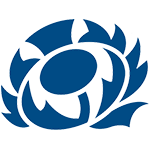
SCOTLAND
Fifteen of Scotland’s players were not born in Scotland. None of the fifteen players are products of the Scottish system. None of them qualified by virtue of spending their youth in Scotland. In short, 0% of Scotland’s foreign-born players are homegrown. In other words, Japan’s 33-man roster contains more homegrown players than does Scotland’s.
60% of Scotland’s foreign-born players have represented other countries in some capacity. Jack Dempsey played for Australia at the previous World Cup and Ben White played for England against the Barbarians in a non-capped match in 2019.
Rookie Ben Healy was born and raised in Ireland and represented Ireland u20. Healy and Australian Sione Tuipulotu as instances of adults who were signed to play in Scotland with the intention of playing for Scotland. They moved to Scotland aged 23 and 24 respectively.
Four South Africans arrived in Scotland as professional adult rugby players. Willem Nel moved aged 26, Pierre Schoeman aged 24 and Duhan van der Merwe aged 22. Kyle Steyn, who is parent qualified, moved to Scotland aged 25.
Ewan Ashman was born in Toronto and moved to England at the age of four. His father is Scottish and his mother is English. Huw Jones was born in Scotland but is not homegrown; he was raised in England.
Born and raised hooker Stuart McInally was ruled out of the World Cup on the same day as Scotland’s match against Tonga. He was replaced by Johnny Matthews who qualifies via his mother. Matthews learned his rugby in England.
SCOTLAND
FOREIGN-BORN PLAYERS: 16/34 (47.0%)
HOMEGROWN PLAYERS: 17/34 (50.0%)
| PLAYER | BORN | PRODUCED | POS | ELIGIBILITY | OTHER REP. |
| Pierre Schoeman | South Africa | South Africa | LH | Residency (2021) | South Africa u18, u20 |
| Ewan Ashman | Canada | England | HK | Parent | – |
| Johnny Matthews | England | England | HK | Parent | – |
| WP Nel | South Africa | South Africa | TH | Residency (2015) | – |
| Javan Sebastian | Wales | Wales | TH | Parent | Wales u16, u18 |
| Sam Skinner | England | England | LO | Parent | England u20 |
| Hamish Watson | England | England | FL | Grandparent | – |
| Jack Dempsey | Australia | Australia | N8 | Grandparent | Australia Schools, u20, Australia |
| Ali Price | England | England | SH | Parent | – |
| Ben White | England | England | SH | Grandparent | England u20, England |
| Ben Healy | Ireland | Ireland | SH | Parent | Ireland u20 |
| Chris Harris | England | England | CE | Grandparent | England Counties |
| Cameron Redpath | France | England | CE | Parent | England u18, u20 |
| Sione Tuipulotu | Australia | Australia | CE | Grandparent | Australia Schools, u20 |
| Kyle Steyn | South Africa | South Africa | WI | Parent | – |
| Duhan van der Merwe | South Africa | South Africa | WI | Residency (2020) | South Africa Schools, u20 |
HISTORICAL NUMBERS
2019 – 15
2015 – 12
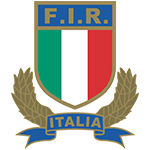
ITALY
Italy’s Rugby World Cup 2023 roster contains four more foreign-born players than that from 2019. None of the twelve players moved to Italy as children. The 33-man roster contains players eligible for Italy in one of two ways: (a) qualify via family ancestry or (b) moved to Italy as adults.
Ange Capuozzo, Sebastian Negri, and Stephen Varney all represented Italy u20. They did so without being based in Italy. They all qualify via heritage as do Juan Ignacio Brex, Dino Lamb-Cona, Iván Nemer, Paolo Odogwu, Martin Page-Relo, and Dave Sisi. Brex used the Olympic loophole to change his allegiance from Argentina to Italy.
Five of the heritage players play their rugby in Italy. Brex, Negri, Nemer and Odogwu play for Benetton in Treviso and Sisi plays for Zebre in Parma.
The three other players qualified via residency. They all did so after moving to Italy as professional rugby players. Hame Faiva and Monty Ioane moved to Italy aged 23 while Toa Halafihi moved to Italy aged 25.
Tommaso Allan was born in Italy. Scotland were not happy with his decision to play for Italy; however, he is not a product of the Scottish rugby system. He was schooled in England and moved there aged 7.
Luca Bigi featured for Italy against Uruguay in Nice. He was injured and ruled out of the remainder of the tournament. His replacement is Marco Manfredi who was born in Germany but raised in Italy. He is homegrown player. Italy’s data have been updated to see an increase from 12 to 13 Foreign-Born players.
ITALY
FOREIGN-BORN PLAYERS: 13/34 (38.2%)
HOMEGROWN PLAYERS: 21/34 (61.7%)
| PLAYER | BORN | PRODUCED | POS | ELIGIBILITY | OTHER REP. |
| Iván Nemer | Argentina | Argentina | LH | Grandparent | Argentina u19, u20 |
| Hame Faiva | New Zealand | New Zealand | HK | Residency (2020) | New Zealand u20 |
| Marco Manfredi | Germany | Italy | HK | Parent | – |
| Dino Lamb-Cona | England | England | LO | Parent | England u20 |
| David Sisi | Germany | England | LO | Parent | England u20 |
| Sebastian Negri | Zimbabwe | South Africa | FL | Parent | – |
| Toa Halafihi | New Zealand | New Zealand | N8 | Residency (2021) | – |
| Martin Page-Relo | France | France | SH | Grandparent | – |
| Stephen Lorenzo Varney | Wales | Wales | SH | Parent | – |
| Juan Ignacio Brex | Argentina | Argentina | CE | Grandparent | Argentina u19, u20, 7s, XV |
| Montana Ioane | Australia | Australia | WI | Residency (2020) | – |
| Paolo Odogwu | England | England | WI | Parent | England u18, u20 |
| Ange Capuozzo | France | France | FB | Parent | – |
HISTORICAL NUMBERS
2019 – 8
2015 – 9
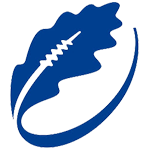
ROMANIA
Four Stejarii forwards and eight Stejarii backs were not born in Romania. Six of the players qualify via a parent and six via residency. The residency players moved to to Romania on rugby contracts as adults. Eleven of the twelve foreign-born players are not homegrown Romanian players.
Injuries to Mihai Mureșan and Paul Popoai saw Tongans Sioeli Lama and Taliauli Sikuea included as final changes to the roster. Lama and Sikuea both moved to Romania aged 20.
Adrian Moțoc was born in France when his father was playing there. He moved to Romania aged 5. He learned his rugby in Romania before returning to France on an Espoirs contract at Racing 92.
Taylor Gontineac is the son of Romeo Gontineac who captained Romania. He played every match for Romania at Rugby World Cups 1995, 1999, 2003 and 2007. He moved to France to play professional rugby. Gabriel Pop was born in Satu Mare, Romania. He moved to Portugal as a child and played for Portugal u20 in 2018.
Romania and Jason Tomane have similarities to Spain and Gavin van den Berg. Tomane’s wife posted information on Instagram which showed that they were outside of Romania for more than the 60 days permitted per year by World Rugby. This made it an identical case to van den Berg but no punishment resulted as World Rugby were happy that they had been consulted in time.
The eligibility changes have not leveled the playing field for Romania; instead, they have reduced Romania’s chances of beating Tonga. On the one hand, Moldova tight head Gheorghe Gajion made the allegiance change to Romania. On the other hand, Tonga who can select Wallabies such as Adam Coleman, Israel Folau and Sekope Kepu and All Blacks Vaea Fifita, Augustine Pulu, George Moala and Malakai Fekitoa. These former All Blacks started against Uruguay in 2022.
Romania’s roster at Rugby World Cup 2011 was 100% homegrown. At Rugby World Cup 2015 it was 87% homegrown (27/31) and for Rugby World Cup 2023 the Romanian roster is 63.6% homegrown (21/33).
Romania lost three players ahead of their pool match against Scotland. Gabriel, Taylor Gontineac and Hinckley Vaovasa were replaced by Luca Nichitean, Mihai Graure and Alexandru Bucur. This saw three homegrown players joining the roster. Romania’s data has been updated to include these alterations.
Luca Nichitean is a second generation Rugby World Cup player. His father is Romanian fly half Neculai Nichitean played at Rugby World Cups 1991 and 1995. He was well known for drop-goals. He landed 10 drop goals in his 28 caps. None of the 10 were in a Rugby World Cup match.
ROMANIA
FOREIGN-BORN PLAYERS: 12/36 (33.3%)
HOMEGROWN PLAYERS: 24/36 (66.6%)
| PLAYER | BORN | PRODUCED | POS | ELIGIBILITY | OTHER REP. |
| Robert Irimescu | USA | USA | HK | Parent | Collegiate All-American |
| Gheorghe Gajion | Moldova | Moldova | TH | Parent | Moldova |
| Thomas Crețu | France | France | TH | Parent | France u20 |
| Adrian Moțoc | France | Romania | LO | Parent | – |
| Sioeli Lama | Tonga | Tonga | SH | Residency (2018) | – |
| Hinckley Vaovasa | New Zealand | New Zealand | FH | Residency (2020) | – |
| Taylor Gontineac | France | France | CE | Parent | – |
| Tangimana Fonovai | Tonga | Tonga | CE | Residency (2015) | – |
| Jason Tomane | New Zealand | New Zealand | CE | Residency (2021) | – |
| Tevita Manumua | Tonga | Tonga | CE | Residency (2019) | – |
| Nicolas Onuțu | France | France | WI | Parent | – |
| Taliauli Sikuea | Tonga | Tonga | WI | Residency (2018) | – |
HISTORICAL NUMBERS
2019 – Disqualified
2015 – 4
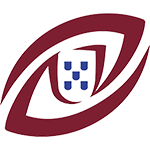
PORTUGAL
Ten members of Portugal’s roster were born and raised in France. All ten, or 30.3% of the players, qualify for Portugal via a parent. The roster is also a combination of players who play their rugby in Portugal and in France.
Joris Moura played for France u17, u18, u20, Steevy Cerqueira played for France u20 and Anthony Alvès played for France at u17 level before playing for Portugal at u18 level. Vincent Pinto played for France u18 and u20, including in Argentina at the World Rugby U20 Championship in 2019. Pinto was a member of the World Championship u20 side that year.
Viewers and players across the border in Spain would not be wrong to question World Rugby’s handling of eligibility. On the one hand, Vincent Pinto playing for Portugal, Thomas Crețu for Romania, Ben Tameifuna for Tonga, Duhan van der Merwe for Scotland and Gareth Anscombe for Wales are legal. On the other hand, Spain was disqualified from RWC 2019 qualifying because Mathieu Bélie and Bastien Fuster had previously played for France vs Wales at U20 level.
PORTUGAL
FOREIGN-BORN PLAYERS: 10/33 (30.3%)
HOMEGROWN PLAYERS: 23/33 (69.7%)
| PLAYER | BORN | PRODUCED | POS | ELIGIBILITY | OTHER REP. |
| Francisco Fernandes Moreira | France | France | LH | Parent | – |
| Lionel Campergue | France | France | HK | Parent | – |
| Mike Tadjer | France | France | HK | Parent | – |
| Anthony Alvès | France | France | TH | Parent | France u17 |
| Steevy Cerqueira | France | France | LO | Parent | France u20 |
| Thibault de Freitas | France | France | FL | Parent | – |
| Nicolás Martins | France | France | FL | Parent | – |
| Samuel Marques | France | France | SH | Parent | – |
| Joris Moura | France | France | FH | Parent | France u17, u18, u20 |
| Vincent Pinto | France | France | WI | Parent | France u18, u20 |
HISTORICAL NUMBERS
2019 – Did Not Qualify
2015 – Did Not Qualify
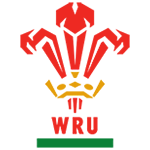
WALES
Ten of Wales’ thirty-three players are foreign-born. Four are homegrown players who went through the Welsh system as children. Taulupe Faletau and Christ Tshiunza moved to Wales aged and 7 and 8. Taulupe Faletau’s father played at RWC 1999 for Tonga. George North and Dan Lydiate are also homegrown; they moved to Wales at the ages of 2 and 4 and were completely developed by Wales.
The six remaining players are not products of Welsh rugby. Five were born and raised in England. Of them two moved to Wales to continue their professional rugby careers. Tomas Francis did so aged 29 and Will Rowlands at the age of 30.
Tomas Francis, Will Rowlands, Henry Thomas, Nick Tompkins and Johnny Williams are products of the English rugby system. They qualify for Wales via heritage. Tompkins previously played for England’s next-of-XV, the England Saxons. Thomas and Williams both played for England.
New Zealander Gareth Anscombe moved from Super Rugby to Wales at the age of 23. Anscombe played for New Zealand u20 in 2011 and signed to play in Wales in 2014 with the intention of playing for Wales. He debuted for Wales in 2015.
Wales approached Anscombe two years after having taken a case to World Rugby (then International Rugby Board – IRB). Steven Shingler played for Wales u20s in 2011 and was named on Scotland’s roster in 2012. Wales argued that Shingler was captured after playing for Wales U20s against France in 2011 because neither Wales nor France had an active next-of-XV at the time. Wales won the case which meant Shingler never played for Scotland.
WALES
FOREIGN-BORN PLAYERS: 10/33 (30.3%)
HOMEGROWN PLAYERS: 27/33 (81.8%)
| PLAYER | BORN | PRODUCED | POS | ELIGIBILITY | OTHER REP. |
| Tomas Francis | England | England | TH | Grandparent | – |
| Henry Thomas | England | England | TH | Parent | England |
| Will Rowlands | England | England | LO | Parent | – |
| Christ Tshiunza | DR Congo | Wales | LO | Residency (2015) | – |
| Dan Lydiate | England | Wales | FL | Parent | – |
| Taulupe Faletau | Tonga | Wales | N8 | Residency (2001) | – |
| Gareth Anscombe | New Zealand | New Zealand | FH | Parent | New Zealand u20 |
| George North | England | Wales | CE | Parent | – |
| Nick Tompkins | England | England | CE | Grandparent | England u18, u20, Saxons |
| Johnny Williams | England | England | CE | Parent | England u20; England |
HISTORICAL NUMBERS
2019 – 8
2015 – 12
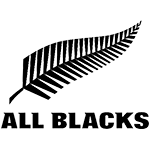
NEW ZEALAND
Nine RWC 2023 All Blacks were not born in New Zealand. This is an increase from six at Rugby World Cup 2019 and four from the World Champion side from Rugby World Cup 2015.
Two qualify via family ancestry and ten via residency. The family-qualified players are Ethan de Groot and Tyrel Lomax who both moved to New Zealand as children. de Groot did so as an infant while Lomax was schooled in both Australia and New Zealand.
Lomax moved back to Australia at the age of 13. He returned to New Zealand again aged 21. For this reason he is not considered as a homegrown All Black. He is the son of former New Zealand professional Rugby League player, John Lomax.
The residency players can be classified into two categories. First, players who moved as children. Second, players who obtained All Black eligibility as adults. Leicester Fainga’anuku moved to New Zealand aged 2 and Ofa Tu’ungafasi did so aged 14. Finlay Christie moved aged 7. Samisomi Taukei’aho is borderline as he moved to New Zealand aged 16.
Like Taukei’aho, Shannon Frizzel earned a scholarship to play in New Zealand following a tour to the country while playing for Tonga at junior level. Frizzel qualified to play for New Zealand as an adult as did rookie Emoni Narawa. He moved from Fiji to finish his final year of schooling in New Zealand. Frizzel and Narawa are not homegrown.
Ethan Blackadder replaced Narawa on the roster one day after New Zealand faced France. The change means Narawa will not play in the World Cup. As a result, the New Zealand totals have been adjusted.
NEW ZEALAND
FOREIGN-BORN PLAYERS: 8/33 (24.2%)
HOMEGROWN PLAYERS: 30/33 (90.9%)
| PLAYER | BORN | PRODUCED | POS | ELIGIBILITY | OTHER REP. |
| Ethan De Groot | Australia | New Zealand | LH | Parent | – |
| Ofa Tu’ungafasi | Tonga | New Zealand | LH | Residency (2009) | – |
| Samisoni Taukei’aho | Tonga | Tonga | HK | Residency (2017) | Tonga u19 |
| Nepo Laulala | Samoa | New Zealand | TH | Residency (2007) | – |
| Tyrel Lomax | Australia | Australia | TH | Parent | Australia u20 |
| Shannon Frizzel | Tonga | Tonga | FL | Residency (2017) | Tonga u20, Tonga u17 Soccer |
| Finlay Christie | Scotland | New Zealand | SH | Residency (2005) | – |
| Leicester Fainga’anuku | Tonga | New Zealand | WI | Residency (2004) | – |
| – |
HISTORICAL NUMBERS
2019 – 4
2015 – 6
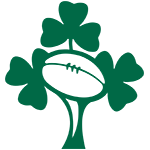
IRELAND
Seven players on Ireland’s roster at Rugby World Cups 2015 and 2019 were not born in Ireland. For Rugby World Cup 2023 the number is eight. The players can be divided into two categories (a) homegrown and (b) players who arrived in Ireland as adults.
Ireland’s two homegrown foreign-born players were born in Reno, Nevada and New York City respectively. Jeremy Loughman and Joe McCarthy moved to Ireland as children. Loughman moved to England before arriving in Ireland aged 12. His father is Irish and his mother is German.
Bundee Aki, James Lowe and Jamison Ratu Gibson-Park were brought to Ireland from New Zealand Super Rugby franchises as professional adult rugby players with the deliberate purpose of being nationalized to play for Ireland. Aki and Gibson-Park moved to Ireland aged 24 while Lowe moved aged 25.
Mack Hansen was signed from Super Rugby as an adult produced by Australia. He qualifies via his mother who was born in County Cork. His mother moved from Ireland to Australia aged 7 while he moved to Ireland aged 23.
Lowe played for the Māori All Blacks against the British & Irish Lions in 2017 after he had signed for Leinster from Super Rugby. Gibson-Park is also a former Māori All Black. Hansen played for Australia at u20 level.
Aware of his Irish grandfather, Ulster recruited Rob Herring from South Africa at the age of 22. Australia Schools player, Finlay Bealham moved to Ireland aged 18. He subsequently played for Ireland at u20 level and eventually became a professional player.
Tight head prop Tom O’Toole was born in Ireland but moved to Australia aged 6 and developed to the point that he represented the Queensland Schoolboys. The IRFU had followed his progression closely in Australia and wanted him back in their system.
IRELAND
FOREIGN-BORN PLAYERS: 8/33 (22.7%)
HOMEGROWN PLAYERS: 26/33 (78.7%)
| PLAYER | BORN | PRODUCED | POS | ELIGIBILITY | OTHER REP. |
| Jeremy Loughman | USA | Ireland | LH | Parent | – |
| Rob Herring | South Africa | South Africa | HK | Grandparent | – |
| Finlay Bealham | Australia | Australia | TH | Grandparent | Australia Schools |
| Joe McCarthy | USA | Ireland | LO | Parent | – |
| Jamison Ratu Gibson-Park | New Zealand | New Zealand | SH | Residency (2020) | New Zealand Māori |
| Bundee Aki | New Zealand | New Zealand | CE | Residency (2017) | – |
| Mack Hansen | Australia | Australia | WI | Parent | Australia u20 |
| James Lowe | New Zealand | New Zealand | WI | Residency (2020) | New Zealand Māori, Schools, u15 Basketball |
HISTORICAL NUMBERS
2019 – 7
2015 – 7
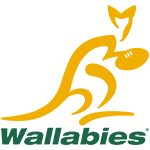
AUSTRALIA
Australia made the final of RWC 2015. The roster for that tournament contained nine players born abroad. It was twelve at RWC 2019 and for RWC 2023 it is seven. The roster for RWC 2023 contains foreign-born players who can be classified in two categories: (a) those who arrived young to be developed by Australian rugby; (b) players who were not developed primarily by Australian rugby.
First, four of the Wallabies RWC 2023 foreign-born players are homegrown. Jordan Uelese was schooled in both Australia and New Zealand. Lalakai Foketi first played in Australia as a scrum-half at u13 level. Captain Will Skelton moved to Australia aged 10. Born in New Zealand, he started playing rugby in Australia aged 15. He previously played rugby league. Samu Kerevi played for Fiji at u20 level but is a homegrown Wallaby. He moved to Australia aged 4.
Second, three qualified as adults while playing professional sport in Australia. The players from this category were born in Tonga and Fiji. Taniela Tupou moved from Tonga to New Zealand on a schools rugby scholarship. He moved to Australia to play professional rugby aged 18 and qualified for the Wallabies as an adult. Tupou, Suliasi Vunivalu and Marika Koroibete became eligible to play for Australia in their 20’s. Vunivalu and Koroibete both previously played rugby league for Fiji.
AUSTRALIA
FOREIGN-BORN PLAYERS: 7/33 (21.2%)
HOMEGROWN PLAYERS: 30/33 (91%)
| PLAYER | BORN | PRODUCED | POS | ELIGIBILITY | OTHER REP. |
| Jordan Uelese | New Zealand | Australia | HK | Residency (2011) | – |
| Taniela Tupou | Tonga | Tonga | TH | Residency (2017) | Tonga u15 |
| Will Skelton | New Zealand | Australia | LO | Residency (1995) | – |
| Samu Kerevi | Fiji | Australia | CE | Residency (2004) | Fiji u20 |
| Lalakai Foketi | New Zealand | Australia | CE | Residency (2011) | – |
| Marika Koroibete | Fiji | Fiji | WI | Residency (2015) | Fiji Rugby League |
| Suliasi Vunivalu | Fiji | Fiji | WI | Residency (2019) | Fiji Rugby League |
HISTORICAL NUMBERS
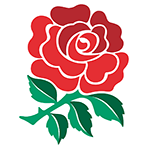
ENGLAND
Six members of England’s roster were not born in England. This matches the number from Rugby World Cup 2019. Five of the six players not born in England moved to England as children and went through the English system. The non-homegrown player is David Ribbans who moved from South Africa to play in England in 2017. He arrived in England at the age of 21. He qualifies via a grandparent.
Bevan Rodd left Scotland when he was nine months old. He grew up in Dubai, the Isle of Man, and North West England, and represented England at u16, u18 and u20 levels. Billy Vunipola played in Wales before arriving in England.
Marcus Smith first played rugby in Singapore and moved to England aged 13. Henry Arundell was born on the Royal Airfare Base in Dhekelia, a British overseas territory on the island of Cyprus. Manu Tuilagi was born in Samoa but raised in England. He faced deportation from England in 2010 for having entered the UK on a tourist visa and subsequently overstaying. His five brothers Freddie, Henry, Alesana, Anitelea, and Vavae all played for their native Samoa.
Injury saw Sam Underhill added to the roster late in the campaign. The Ohio native played for England in one match. His appearance was against Argentina in the Bronze Final. The data has been updated to include Underhill.
ENGLAND
FOREIGN-BORN PLAYERS: 7/34 (20.5%)
HOMEGROWN PLAYERS: 33/34 (97%)
| PLAYER | BORN | PRODUCED | POS | ELIGIBILITY | OTHER REP. |
| Bevan Rodd | Scotland | England | LH | Parent | – |
| David Ribbans | South Africa | South Africa | LO | Grandparent | – |
| Sam Underhill | USA | England | FL | Parent | – |
| Billy Vunipola | Australia | England | N8 | Residency (2008) | – |
| Marcus Smith | Philippines | England | FH | Parent | – |
| Manu Tuilagi | Samoa | England | CE | Residency (2007) | – |
| Henry Arundell | Dhekelia | England | WI | Parent | – |
HISTORICAL NUMBERS
2019 – 6
2015 – 3

FIJI
Five members of the Fijian roster were not born in the country; all five players are ancestry qualified. They are of two varieties: parent and grandparent. Four are parent-qualified. The one grandparent-qualified player is fly half Caleb Muntz.
Te Ahiwaru Cirikidaveta qualifies for Fiji via his father whom he met for the first time in 2022. Selestino Tavutaumada completed high school in New Zealand. Teti Tela was born in Fiji but is not homegrown. He moved to New Zealand aged 7 then to Australia aged 12. He is a product of the Australian system.
It is important to note that Fiji has not selected players now available from the eligibility law changes. Players not selected include Samuela Anise, Nathan Hughes, Taqele Naiyarovoro, Sefa Naivalu, Tevita Kuridrani, Seta Tamanivalu, Waisake Naholo, Semesa Rokoduguni, and Henry Speight.
Fiji’s foreign-born numbers are the lowest of the Oceania competitors. Fiji had three foreign-born players on the Rugby World Cup 2015 roster, four in 2019 and five in 2023.
Fiji made a change to their roster on the opening day of the World Cup. Caleb Muntz was forced out injured with Vilimoni Botitu replacing him. Botitu was born in Fiji and is a homegrown.
A second change came in between Fiji’s pool matches against Australia and Georgia. Head Coach Simon Raiwalui called up Emosi Tuqiri as an injury replacement for prop Jone Koroiduadua. Tuqiri was born in Fiji but is an Australian product. He was described as a Wallaby in the making. Fiji’s data has been updated following the changes.
FIJI
FOREIGN-BORN PLAYERS: 4/35 (12.5%)
HOMEGROWN PLAYERS: 28/35 (80.0%)
| PLAYER | BORN | PRODUCED | POS | ELIGIBILITY | OTHER REP. |
| Sam Matavesi | England | England | HK | Parent | – |
| Zuriel Togiatama | New Zealand | New Zealand | HK | Parent | – |
| Te Ahiwaru Cirikidaveta | New Zealand | New Zealand | LO | Parent | – |
| Isoa Nasilasila | Australia | Australia | LO | Parent | – |
| – |
HISTORICAL NUMBERS
2019 – 4
2015 – 3
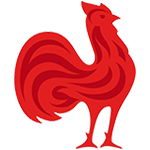
FRANCE
France’s quantity of foreign-born players has decreased sharply. France had 10 at Rugby World Cup 2015 and five at Rugby World Cup 2019. The 2023 roster contains one.
In order to play for France all players are required to hold French passports. This is presently unique, though is a factor which World Rugby would be advised to implement given controversies at past World Cups and during qualifying.
France’s original 33-man roster contained two foreign-born players, both of whom arrived as adults for the strict purposes of playing professional rugby. Neither Uini Atonio nor Paul Willemse are homegrown French players. Atonio moved to France aged 21 and Willemse moved to France aged 22. Willemse lived in Namibia between the ages of 16 and 18. Willemse was ruled out of the World Cup on September 01 and replaced by Bastien Chalureau.
The roster also contains players from Overseas France, meaning territories outside of Europe that remain a part of the French state. Sipili Falatea and Yoram Moefana are from Wallis and Futuna while Peato Mauvaka is from New Caledonia.
Thibaud Flament is French-born but not homegrown. He was raised in Belgium. He started playing rugby at the age of 8 for ASUB Rugby Waterloo. He also played in Buenos Aires. France is tied with Georgia for Europe’s most homegrown World Cup competitor.
FRANCE
FOREIGN-BORN PLAYERS: 1/33 (3%)
HOMEGROWN PLAYERS: 31/33 (93.9%)
| PLAYER | BORN | PRODUCED | POS | ELIGIBILITY | OTHER REP. |
| Uini Atonio | New Zealand | New Zealand | TH | Residency (2014) | Samoa u20 |
HISTORICAL NUMBERS
2019 – 5
2015 – 10
Chile will be the only country debuting at Rugby World Cup 2023. Los Cóndores are the first new team since Russia at Rugby World Cup 2011. Chile’s roster is completely homegrown. All players that won qualifying matches against Brazil, Canada and the USA are products of Chile’s domestic system.
Salvador Lues was born in Lima, Peru to Chilean parents. The family returned to Chile immediately after his birth. He never lived in Lima and spent all his school years in Chile. He is a product of COBS in Santiago and a professional rugby player for Selknam.
Matías Garafulic was born in São Paulo, Brazil to Chilean parents. His father was working in Brazil at the time of his birth. They returned to Chile when he was two years old. His older brother, Nicolás Garafulic is also on Chile’s roster for the World Cup. He was born in Santiago. Like Salvador Lues, the Garafulic brothers are from the COBS club.
CHILE
FOREIGN-BORN PLAYERS: 2/33 (6%)
HOMEGROWN PLAYERS: 33/33 (100%)
| PLAYER | BORN | PRODUCED | POS | ELIGIBILITY | OTHER REP. |
| Salvador Lues | Peru | Chile | LH | Parent | – |
| Matías Garafulic | Brazil | Chile | CE | Parent | – |
HISTORICAL NUMBERS
2019 – Did Not Qualify
2015 – Did Not Qualify
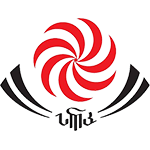
GEORGIA
Merab Sharikadze is back for a third World Cup. He was born in the Russian SFSR. His Georgian parents returned to Tbilisi several months after the birth. Sharikadze is the only player born abroad to have been involved in Georgia’s campaigns at Rugby World Cups 2015, 2019 and 2023.
Giorgi Tsutskiridze was born in Georgia, but started his career in Angouleme, France in 2005 when he was 9 years-old. He had plenty to do with Georgian rugby long before making his test debut against Belgium in 2017. He played for Georgian junior teams as a teenager.
Injuries forced changes during the World Cup. Prop Irakli Aptsiauri replaced Luka Japaridze and flanker Otari Giorgadze replaced Beka Gorgadze before facing Fiji. Both are Georgian born and homegrown.
Further changes occurred ahead of Georgia’s match against Wales. Mikheil Babunashvili replaced Lasha Jaiani, Vano Karkadze replaced Tengiz Zamtaradze and Otari Lashkhi replaced Mirian Modebadze. All are Georgian born and homegrown.The alterations have been added to update Georgia’s data.
GEORGIA
FOREIGN-BORN PLAYERS: 1/38 (2.6%)
HOMEGROWN PLAYERS: 37/38 (97.3%)
| PLAYER | BORN | PRODUCED | POS | ELIGIBILITY | OTHER REP. |
| Merab Sharikadze | Russia USSR | Georgia | CE | Parent | – |
HISTORICAL NUMBERS
2019 – 1
2015 – 1
All players on Uruguay’s roster are homegrown. Thirty-two were born in Uruguay and one player was born in Argentina. Baltazar Amaya moved to Uruguay aged 8. He first played rugby for Hindú aged 5. He retains a bond to the club and is friends with Argentina XV captain Joaquín de la Vega Mendía.
Uruguay’s roster was also completely homegrown at Rugby World Cups 2015 and 2019. The one Foreign-Born player in these tournaments was Alejo Corral who played in the former. He was Argentine born but Uruguayan raised.
World Rugby CEO Alan Gilpin said the amendment was a not “Pacific Island measure.” He noted that Uruguay can benefit. “Uruguay, certainly, Namibia, all those countries can benefit. They’ve all produced players that may have been captured.”
Uruguay has not ‘lost’ players to other countries. Moreover, World Rugby data show Samoa and Tonga’s on-island registered player number are both larger than Uruguay’s. The data lists Uruguay with 10,506 registered players, Georgia with 9,451 and Chile with 2,988. By way of comparison, Samoa is listed with 13,249 registered players and Tonga with 23,873.
Los Teros Head Coach Esteban Meneses slammed World Rugby’s eligibility law changes which enable players to change countries. Meneses believes that eligibility laws are unfair and backward. He believes that homegrown teams are victims of the system. He asked “Why aren’t Uruguay or Georgia rewarded if they do things well?” In other words, Uruguay and Georgia are punished for being productive while Tonga and Samoa capture elite test players from rivals and are rewarded for it.
URUGUAY
FOREIGN-BORN PLAYERS: 1/33 (3%)
HOMEGROWN PLAYERS: 33/33 (100%)
| PLAYER | BORN | PRODUCED | POS | ELIGIBILITY | OTHER REP. |
| Baltazar Amaya | Argentina | Uruguay | FB | Residency (2009) | – |
HISTORICAL NUMBERS
2019 – 0
2015 – 1
Argentina’s 33-man roster contains players from across the country. Every player was born and raised in Argentina. Every player learned his rugby in Argentina. The roster is entirely homegrown. The 33 players all received a phone call from a former Puma to notify them of their selection for Rugby World Cup 2023.
ARGENTINA
FOREIGN-BORN PLAYERS: 0/33 (0%)
HOMEGROWN PLAYERS: 33/33 (100%)
HISTORICAL NUMBERS
2019 – 0
2015 – 0
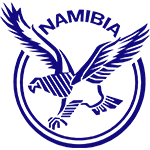
NAMIBIA
All thirty-three players on roster are from Namibia. Some were born before independence when it was South-West Africa. Those players are not considered born outside of Namibia. Similarly, players born in Walvis Bay prior to independence are not listed as born abroad. Desiderius Fernandas Sethie is an example.
Not all of the 2023 Welwitschias are homegrown. Namibia’s roster includes former Wallaby Richard Hardwick. He was born in Namibia but learned his rugby as a child in Australia. Aranos Coetzee was born in Namibia but raised in South Africa. Adriaan Ludick is from Windhoek, Namibia but he attended high school in Cape Town, South Africa. Torsten Van Jaarsveld, Louis Van der Westhuizen, Tiaan Swanepoel, Le Roux Malan, and Gerswin Mouton are also non-homegrown Welwitschias.
Namibia lost Le Roux Malan to injury during the World Cup. He was replaced by Lloyd Jacobs. Namibia’s data has been updated to include Jacobs.
NAMIBIA
FOREIGN-BORN PLAYERS: 0/34 (0%)
HOMEGROWN PLAYERS: 26/34 (76.4%)
HISTORICAL NUMBERS
2019 – 0
2015 – 1
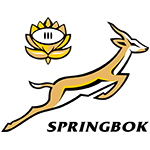
SOUTH AFRICA
Every Springbok at RWC 2023 was born and raised in South Africa. The 2019 champions have a completely homegrown roster to defend their title. The rosters for 2019 and 2015 featured loose head prop Tendai Mtawarira as the one import.
Head Coach Jacques Nienaber named Jean Kleyn on his Rugby Championship roster. Kleyn is South African born, raised and produced. Under the terminology ‘project player’, Kleyn played five Tests for Ireland, including starting against the entirely homegrown Russia at RWC 2019. He qualified via three years residency after arriving in Ireland in 2016. South Africa voted against changing Regulation 8.
Hooker Malcom Marx was injured and replaced by fly half Handre Pollard during the pool stage. Winger Makazole Mapimpi was injured in South Africa’s final pool match and replaced by Lukhanyo Am. The changes have been added to the South African roster data.
SOUTH AFRICA
FOREIGN-BORN PLAYERS: 0/35 (0%)
HOMEGROWN PLAYERS: 35/35 (100%)
HISTORICAL NUMBERS
2019 – 1
2015 – 1
 HOMEGROWN PLAYERS AT RUGBY WORLD CUP 2023
HOMEGROWN PLAYERS AT RUGBY WORLD CUP 2023
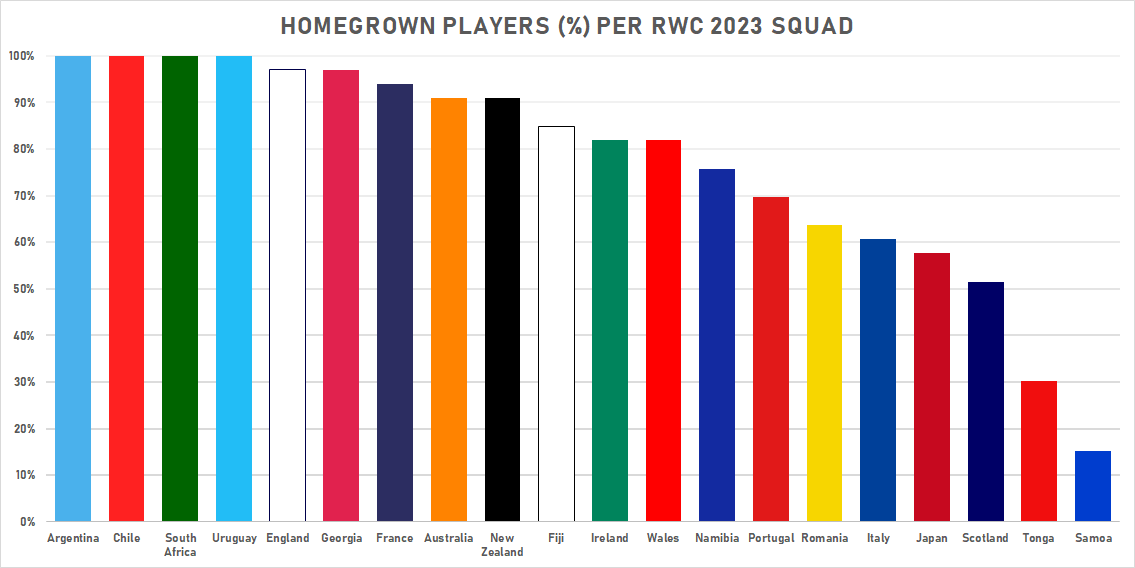

FOREIGN-BORN PLAYERS – TOTALS BY POOL
POOL A – (23)
POOL B – (59)
POOL C – (32)
POOL D – (50)
FOREIGN-BORN PLAYERS – TOTALS BY REGION
AFRICA – (0)
ASIA – (17)
EUROPE – (78)
OCEANIA – (66)
SOUTH AMERICA – (3)
FOREIGN-BORN PLAYERS – COUNTRY OF BIRTH
NEW ZEALAND – (57)
AUSTRALIA – (19)
FRANCE – (17)
ENGLAND – (16)
TONGA – (15)
SOUTH AFRICA (9)
FIJI – (5)
ARGENTINA – (3)
USA – (3)
GERMANY (2)
SAMOA – (2)
SCOTLAND – (2)
WALES – (2)
BRAZIL – (1)
CANADA – (1)
DEMOCRATIC REPUBLIC OF THE CONGO – (1)
DHEKELIA (1)
IRELAND – (1)
MOLDOVA – (1)
PHILIPPINES – (1)
PERU – (1)
RUSSIA – (1)
SOUTH KOREA – (1)
THAILAND – (1)
ZIMBABWE – (1)
FOREIGN-BORN PLAYERS – TOTALS BY WORLD CUPS
RWC 2015 – (130)
RWC 2019 – (144)
RWC 2023 – (163)
HOMEGROWN PLAYERS – TOTALS BY REGION
AFRICA – (62/70)
ASIA – (23/34)
EUROPE – (239/308)
OCEANIA – (105/171)
SOUTH AMERICA – (99/99)
WORLD – (530/683)
HOMEGROWN PLAYERS – % PER REGION
AFRICA – (88.5%)
ASIA – (67.6%)
EUROPE – (77.6%)
OCEANIA – (61.4%)
SOUTH AMERICA – (100%)
WORLD – (77.6%)
 Americas Rugby News Rugby news from across the Americas!
Americas Rugby News Rugby news from across the Americas!
